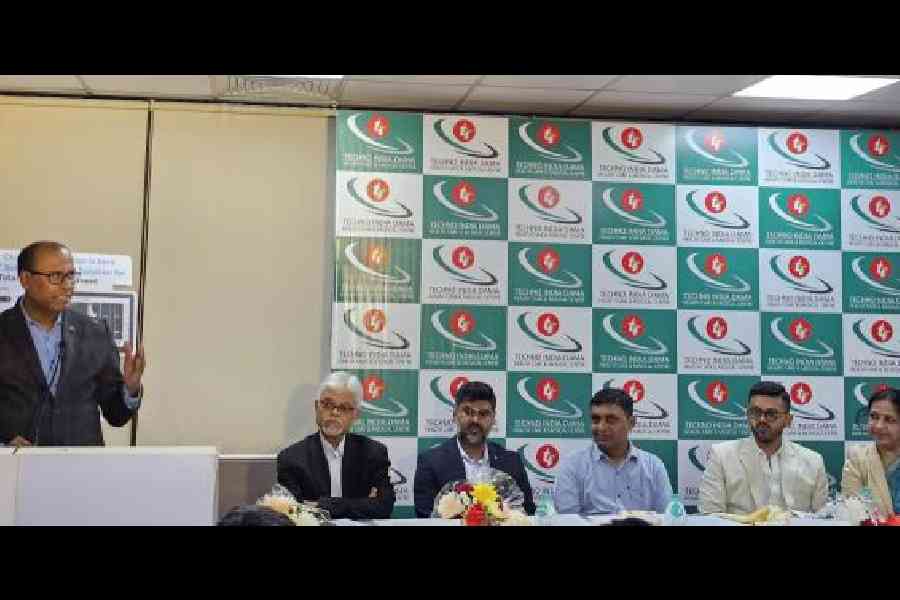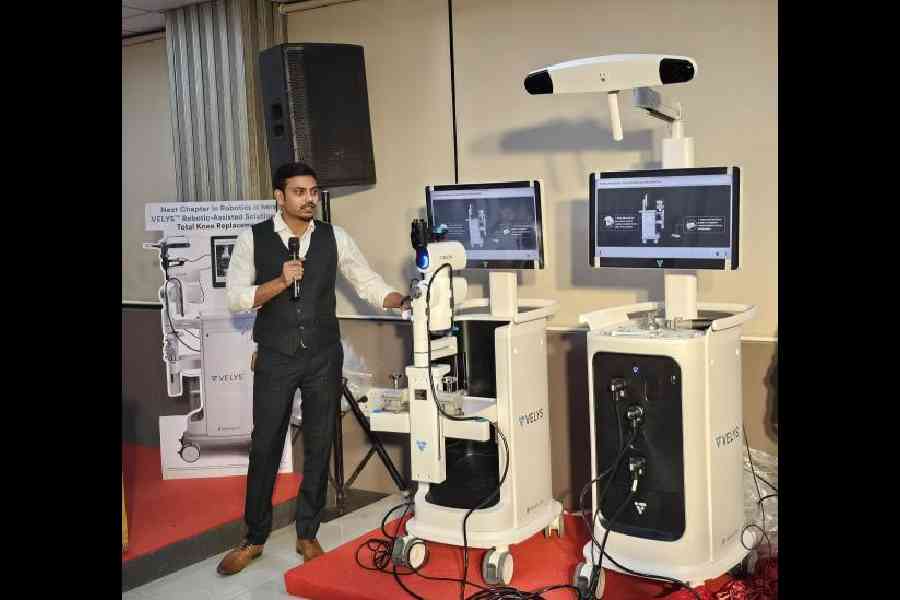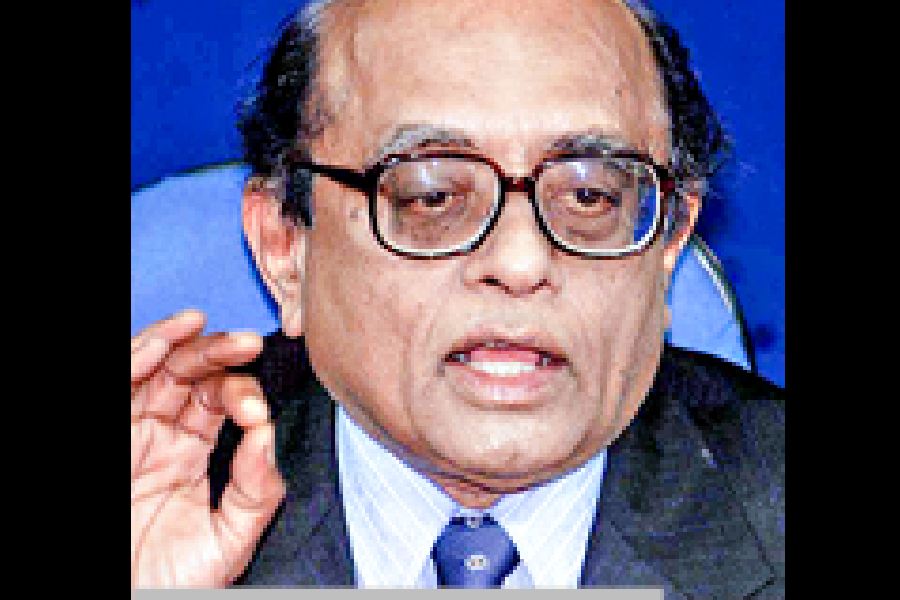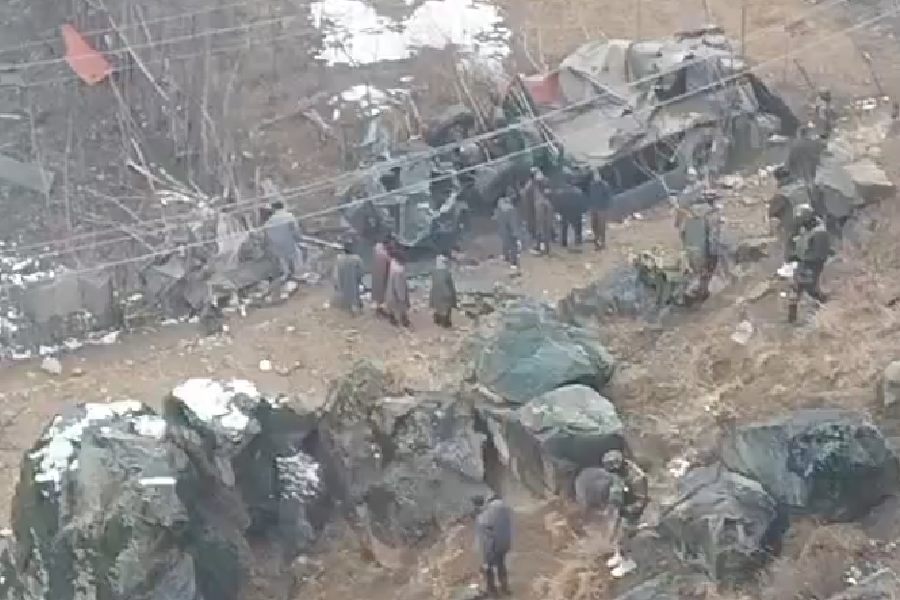Robotics has entered the orthopedic surgery operation theatre at Techno India Dama Hospital on the Bypass on the back of a digital surgery platform developed by Johnson & Johnson MedTech. The hospital has acquired a VELYS robotic surgery unit which was formally unveiled recently and will be used to treat knee ailments.
Dr Rajeev Raman, secretary of the Indian Orthopaedic Association (IOA), pointed out that arthritic complaints were no longer restricted to the elderly. “Knee degeneration takes place primarily because of ageing, and also due to bone inflammation or trauma. But nowadays we see early arthritic changes also. We are getting patients in their 40s and 50s who are coming with degeneration in knee joints. For resurfacing of the knee joint, we have a zig to have precise control over the alignment of the knee and now we have a robot.”
The VELYS robot, he explained, is one of the fastest systems. “One reason is it is saw-based rather than burr-based. And it does not require a CT scan of the knee, which exposes the patient to radiation that is 40 to 100 times that of an X-ray. Just a simple X-ray is enough to plan a robotic knee replacement. It is also one of the fastest. So once you learn it, you can do a knee replacement in less time than in the conventional system.”
The IOA, he said, was organising cadaveric courses in different parts of India. We can plan workshops also so that no one is left behind in use of this cutting-edge technology for better results in osteo-arthritic knee.”

Dr Rajeev Raman, secretary of the Indian Orthopaedic Association, speaks at the launch of the VELYS robotic platform at Techno Dama Hospital
Dr Gautam Gupta, a robotic orthopaedic surgeon attached to the hospital, explained the choice of the VELYS robot. “Johnson & Johnson is a pioneer in prosthesis. Their robot came late, in 2022. This means they incorporated all the good things of the earlier robots. The USP of the robot is the tensor sensor, a device which is put in the knee joint after the tibia is cut. When you do the range of motions, you will get the tightness of the knee throughout the range. Accordingly, you can plan your femur cut so you can balance the knee,” he said.
A surgeon would still do the surgery, he emphasised, after the planning is done jointly by the doctor and the robot. “A robotic surgery is more precise. The robot guides the surgeon if there is a misalignment,” Dr Gupta added.
A J&J representative demonstrated how a robotic arm moved. “It has to move in all the six planes efficiently. So the platform first checks if the device is moving correctly.” The robotic unit, he said, comprises three consoles — one is the satellite station which holds the robotic arm, the base station which holds the camera and is the brain of the system while the third is the digital robotic arm, which is attached to the bed rail of the OT table. “The other two consoles stay away from the OT table — the satellite station is in the sterile zone and the base station is in the non-sterile zone of the OT. Both screens share the image of the robotic system. A graph allows the surgeon to visualise the patient’s natural anatomy and the degree of deformity based on which he decides on the operating procedure,” he added.
The VELYS robot, he said, was a fourth-generation model of an orthopaedic robot. “It is powered by a 250Hz infrared camera, which is highly adaptive through a hydrophobic optical array which can detect leg movement during surgery very fast. And being a saw-based robot, it can perform bone cuts in minimum time, thus reducing OT time,” he explained.
Dr Sourav Ghosh, the hospital’s medical director, said though the charges had not been fixed, robotic orthopaedic surgery was expected to cost Rs 50,000 more than the conventional one.
A surgeon would have to undergo training before he is allowed to perform robotic surgeries, Dr Gupta assured The Telegraph Salt Lake. “The schedule involves dry bone training at the start, followed by cadaver training after which the trainee would be placed under observership of a senior surgeon in an OT. There he will perform supervised surgery. Only then will the senior surgeon certify him to be fit to perform robotic surgeries,” he said.
The advantage of robotic surgery is reduced surgery time, higher precision, quicker recovery and less risk of complication, said Manoshi Roychowdhury, co-chairperson of the Techno India Group, of which Techno India Dama Hospital is a part.
Chief innovation officer and executive director of the group, Meghdut Roychowdhury, put the development in perspective. “Ten years ago, if we heard that a robot was going to operate on us, what kind of confidence level would we have had in the robot? Because of the advancement of technology and democratisation of information, accessed through social media, people are a lot more receptive to new technology. Advancements will keep happening. In the end, what people care about is whether they will go back home to their family in good health, and that is the only work of the hospital,” he said.










